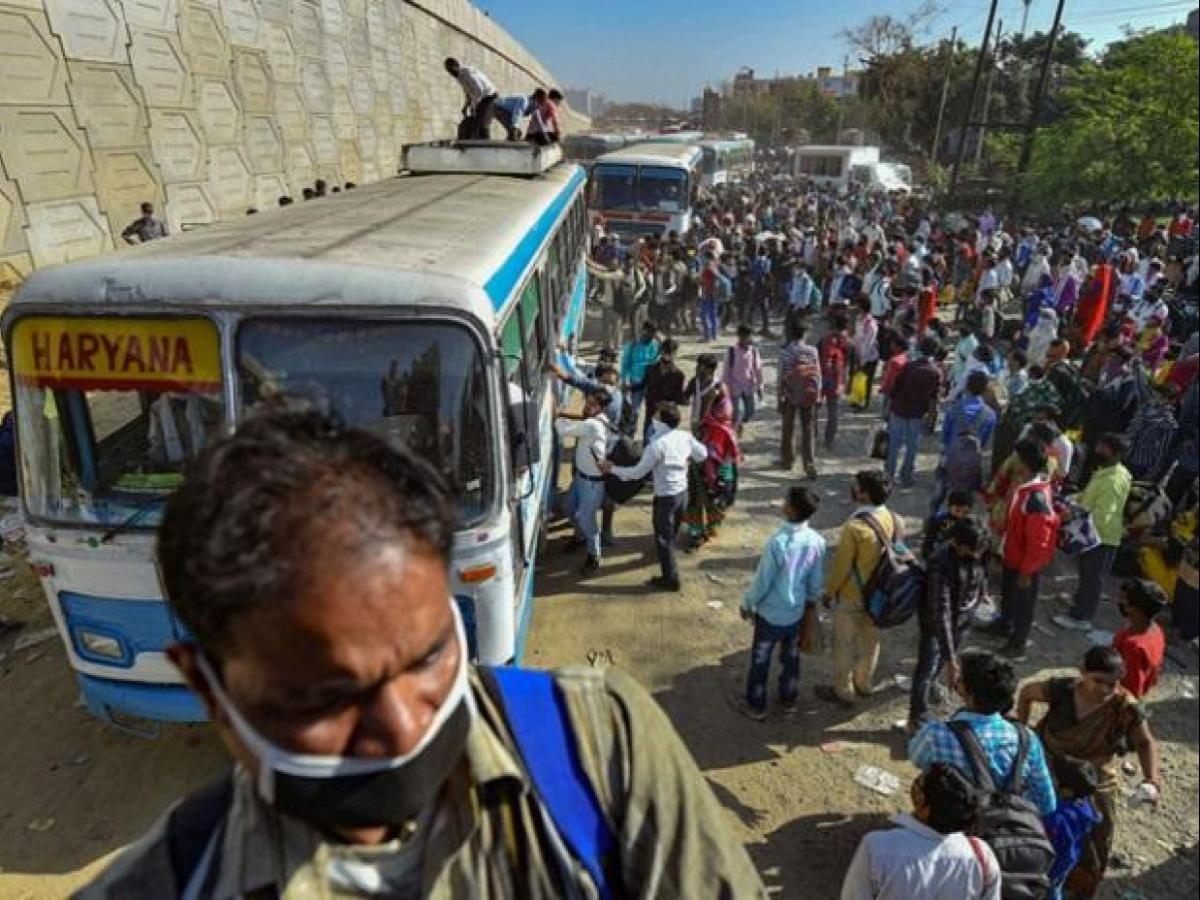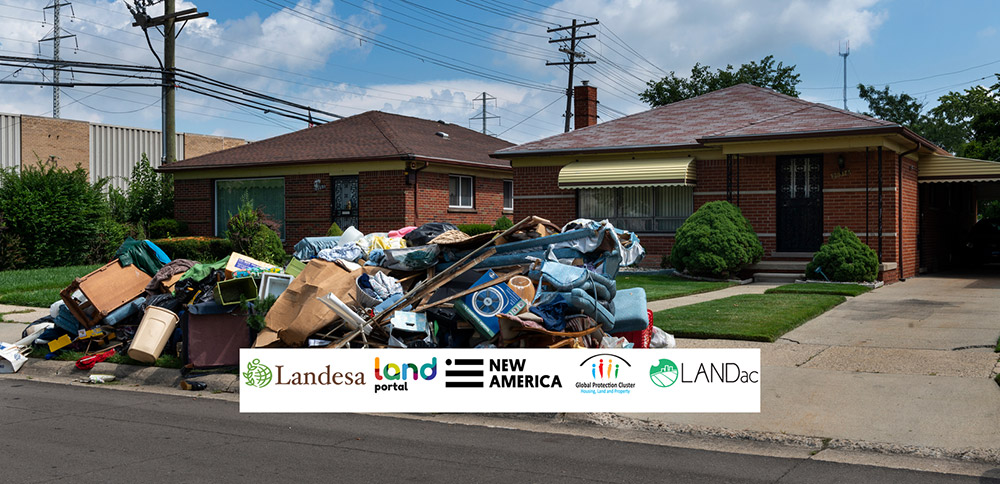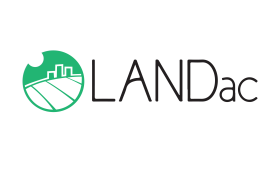Land, Housing, and COVID-19
A series of briefs, inspired by and sourced heavily from this webinar and discussion series, spotlights a selection of these challenges, and provides suggestions for how they may be addressed.
This discussion sought to develop a set of actionable recommendations to policy makers, as well as practical recommendations based on what is happening on the ground, with regard to land rights and COVID-19. The discussion aimed to identify both short term and longer term actions that can effectively contribute to supporting land governance stakeholders facing an ongoing pandemic, while looking forward to post-pandemic priorities.
The Land Rights and COVID-19 webinar and discussion series was presented by Land Portal, Landesa, the Global Protection Cluster HLP AOR and GIZ, with organizing support from Environmental Peacebuilding Association, LANDac, New America and the UK's Department for International Development (DFID).
How can I participate in the debate?
Create a profile on the Land Portal to join the dialogue and also share your news, views, research and publications with the global land community.
Topics of discussion
The discussion will focus on key statements with guiding questions.
-
How is COVID-19 affecting women in your country and community?
-
Looking more specifically at land, how is the virus affecting women’s ability to access and use land?
-
Are women likely to face added pressure on their land as a result of COVID-19 as people move back to rural areas OR as spouses, parents, children or siblings become sick or die?
-
If women become ill or die, are their land rights likely to be compromised?
-
In addition to illness and possible in-migration, how else is COVID-19 likely to impact women’s land rights, including the long-term impacts?
-
What are you doing, in your organization, to address these threats?
-
What else should we be doing right now to address these concerns? What should we be doing in the medium to longer-term to address threats to women’s land rights?
-
If you were able to pick one thing to do today to help protect women’s land rights that might be threatened as a result of the COVID-19 virus, what would it be?
Even in non-pandemic times, evictions are humanitarian crises – with lasting effects on the health, well-being, education, and livelihoods of not only those who have been evicted, but communities as a whole.
Not all governments have enacted measures to secure housing tenure for tenants and occupants of camps and informal settlements in response to this crisis. Among those jurisdictions who have put in measures, most have moved to enact moratoriums on eviction and utilities shut-offs, and a minority have put in measures to reduce rents or offer rental subsidies to the most vulnerable households. However even these measures will expire in the coming weeks and months even when economies have not fully “reopened” and livelihoods revived, leaving renters with several months worth of unpaid rent. What happens then? And what is happening to vulnerable tenants and occupants in jurisdictions where no measures to mitigate these risks have been put into place, or governments do not have the capacity to implement the measures they pass?
Questions:
-
Some jurisdictions are considering or have implemented measures to mitigate the risk of evictions, with the most common approach appearing to be the suspension of all formal eviction proceedings for the duration of the public health emergency.
-
What are some of the advantages and limitations of this approach?
-
How do we also protect landlords who rely on rent for their own subsistence?
-
What happens when the moratoriums and other measures end and tenants have to pay several months of back rent?
-
-
What is the situation for vulnerable tenants and occupants in jurisdictions where no measures have been put into place (or governments do not have the capacity to implement /enforce their moratoria) to secure their tenure?
-
What are some practical tools and approaches that practitioners can advocate for or deploy on the ground to keep people housed? What are some of the limitations, risks, and challenges around these approaches?
-
Evictions are a chronic risk for impoverished and marginalized populations (especially displaced populations), even in non-pandemic times. Anticipating that inequality in terms of livelihoods and housing is being exacerbated by the COVID-19 crisis, what would you like to see in terms of the evolution of law, policy and practice on this issue?
The COVID crisis has millions of people on the move, and tens of thousands stranded far from their homes. Most notably, as economies shut down and lockdowns proliferate, de-urbanization has emerged as a serious challenge throughout the developing world. As people leave cities they are leaving properties behind, which creates a range of challenges, such as how to ensure their properties are not taken over by others, whether they be developers, government agents or squatters.
Re-integrating this mass of people into rural communities presents another serious challenge and may lead to a rise in conflicts. What are the dispute resolution activities we should be thinking about today? Another emerging challenge is related to the question of remittances. People in rural areas, in LAC and also in Asia, for example, rely on remittances to build homes, maintain homes, and invest in local businesses. As levels of remittances drop, how can these investments be protected? Moreover, will this mass influx of people returning to rural areas be beneficial for food systems as increased rural laborers become available? What will be the impacts of de-urbanization and its impacts on access to land by youth.
Questions:
-
As global lockdowns take effect, we see massive amounts of people moving from cities back to their hometowns. What are the broad property rights implications of this migration? What lessons can be drawn from other epidemics (ebola?) and natural disasters?
-
How do we protect the properties people are leaving behind? For example, from developers or squatters? How do we ensure these people can return once lockdowns lift, and how can we avoid inequalities resulting from the lockdown lift?
-
How do we accommodate all of the people returning to the countryside? How do we allocate housing and land to them, and how do we resolve disputes that will inevitably arise? What should rural communities be doing now, to prepare?
-
What will be the anticipated impact on food systems, health services and education of adding so many new residents into sparsely populated areas?
-
Many people in rural areas rely on remittances from relatives in cities to build and maintain their homes. What will happen as these remittances dry up? As levels of remittances drop, how can these investments be protected?
-
We are also seeing increasing mobility restrictions that leave people stranded far from their homes. What are the property rights implications of this?
Where lockdown measures lead to the closing of land administration services, land rights may come under pressure, potentially squeezing out the poorer segments of the population. As people migrate out of the cities back to the countryside this generates pressures on land in the places they move to. Those returning from the city may have a comparative advantage both in terms of financial means and legal literacy. In this context, the need for responsible and responsive land governance is greater than ever, at a time that the land administration system seems least prepared to deliver this. The resulting gaps in land governance may lead to lack of transparency, lack of protection and increases the room for elite capture. People suffering a sudden loss of income may be at a greater risk of eviction, both in rural and in urban areas.
Questions:
-
What challenges do you see to land administration services under lockdown, at local, regional or national levels? Have they found ways to work around the lockdown?
-
Who is jumping into the gap left by state services? Who is taking action when the official land service is not? Are the chiefs filling in the gaps? Are land agents attending the population informally (e.g. from their homes)?
-
What can be done to prevent the lockdown from resulting in a lasting, irreversible erosion of capacity and legitimacy of land administration services?
-
Given the fact that the crisis has allowed the government to restrict freedom on the basis of extraordinary circumstances, do you see any challenges in transparency in the way governments are responding to information requests or the ability to CSOs, media, academia, to put adequate pressure?
-
With the increased appetite that people have for reliable and up to date information and data, how do we make sure we keep monitoring the amount of data that is made available in an open format? How can we propose solutions that increase the level of openness and we don’t forget lessons we learned in the past?
-
What are the main challenges posed by publishing information and data in times of Covid-19 and in maintaining governments open when people are confined and locked down?

















































































 There are other implications that the COVID-19 pandemic has created on the rural economies and livelihoods especially amongst the pastoralists and agro-pastoralists. Shutting down of key economic institutions like markets has presented significant impacts in terms of income and the social interactions amongst the rural communities. Supply chain from the producer to the market has been interrupted in cases where lockdown has been imposed in cities and this has cut off rural based producers without markets. The activities in land or the land based production are halted.
There are other implications that the COVID-19 pandemic has created on the rural economies and livelihoods especially amongst the pastoralists and agro-pastoralists. Shutting down of key economic institutions like markets has presented significant impacts in terms of income and the social interactions amongst the rural communities. Supply chain from the producer to the market has been interrupted in cases where lockdown has been imposed in cities and this has cut off rural based producers without markets. The activities in land or the land based production are halted.









